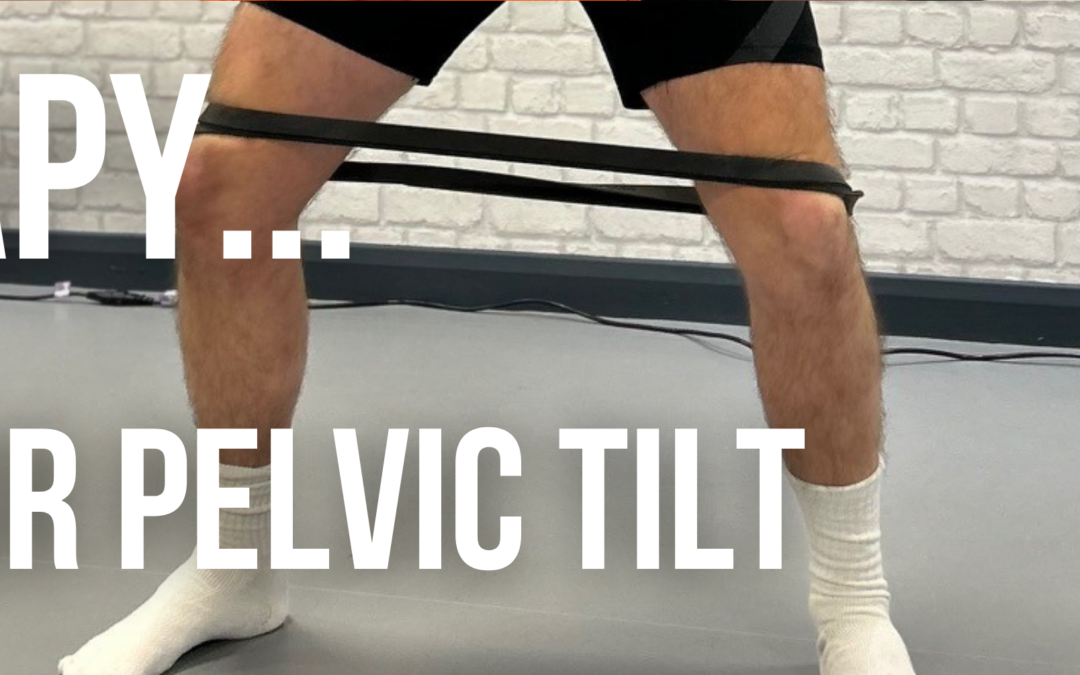What Is Anterior Pelvic Tilt?
Anterior pelvic tilt is a postural deviation in which the pelvis or hips are tilted forward (anteriorly). This causes lordosis in the lumbar spine region and looks as if you are sticking your buttocks out and your lower abdomen forward. Although not a medical condition, anterior pelvic tilt can have implication in your movement patterns, muscle imbalances and injury risk.
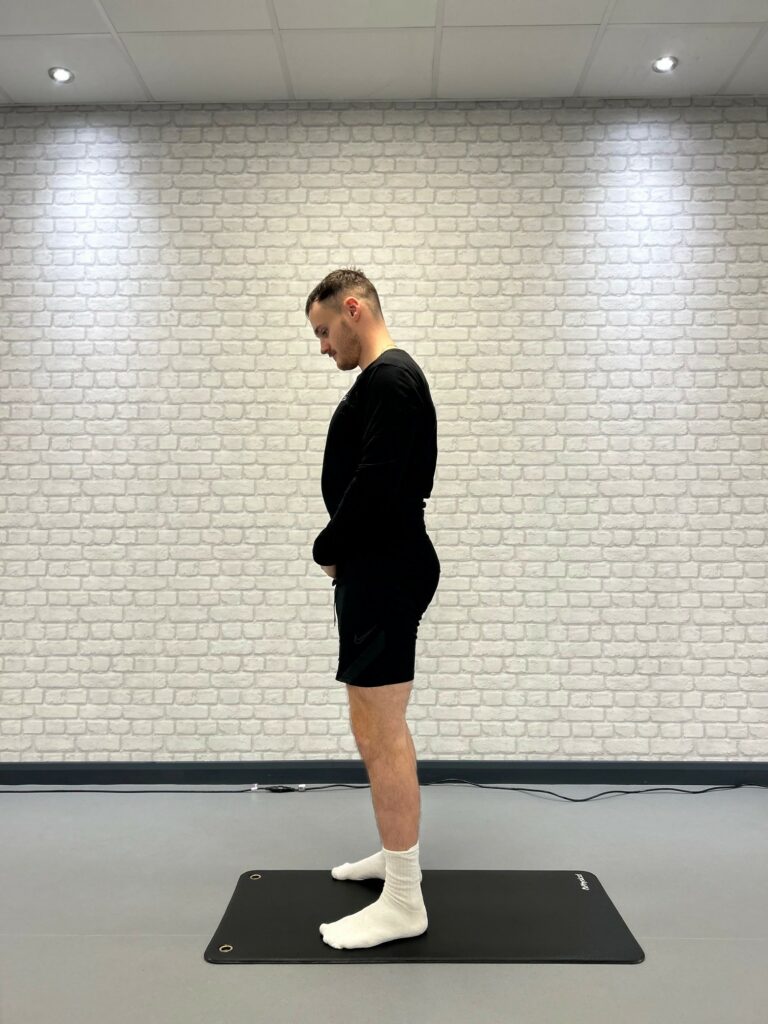
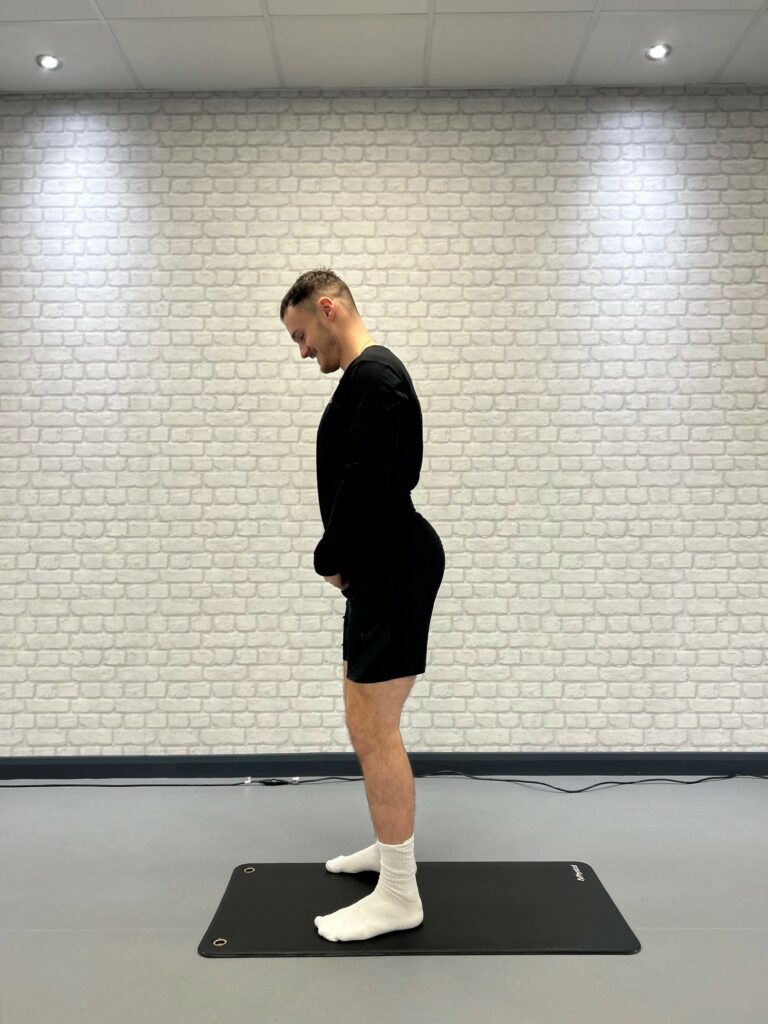
Because of the modern world we live in, anterior pelvic tilt is highly prevalent in the general population. It is usually a consequence of prolonged sitting. Prolonged sitting causes the hip flexors and lower back to tighten, and the glutes and hamstrings to become weaker. Overall, this means that the pelvis cannot be “pulled” back into a neutral position – resulting in the lumbar lordosis shown in the picture above.
Problems Associated With Anterior Pelvic Tilt
This altered pelvis position has a host of negative effects on the body’s connective tissues, joints and surrounding muscles. These include:
- Altered walking and running gait (the way we walk/run)
- Problems activating glutes
- Lower back pain
- Weak core muscles
- Hip pain/tightness
- Increased susceptibility to hamstring injuries
How Do We Solve Anterior Pelvic Tilt?
1. Mobilise And Strengthen The Hip Flexors
To “pull” the pelvis back into a neutral position we need to relieve some tension in the hips, and then strengthen them. Below shows the Half Kneeling Lateral Hip Flexor Stretch and Hip CAR. These exercises will mobilise and strengthen the hip flexors.

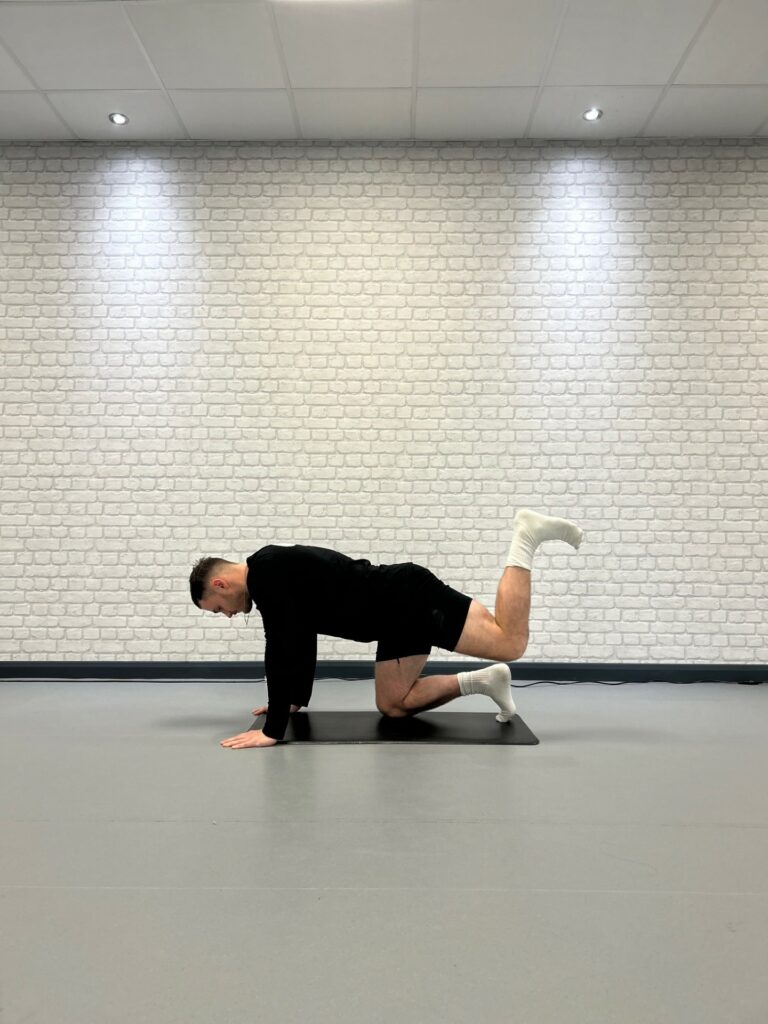
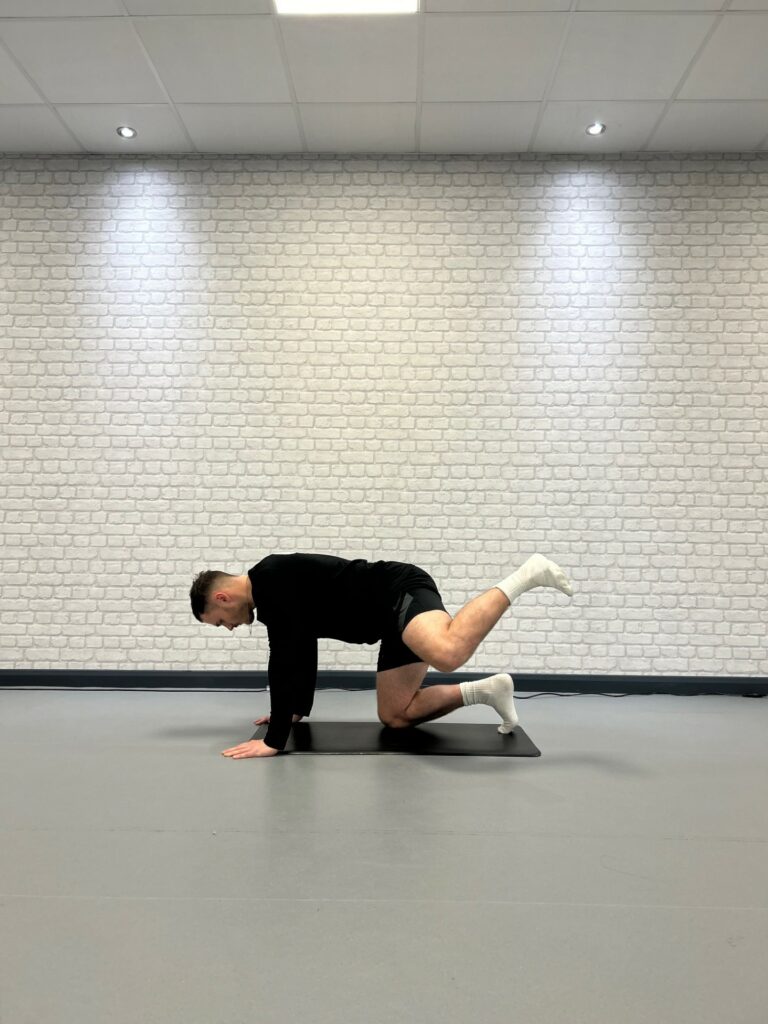
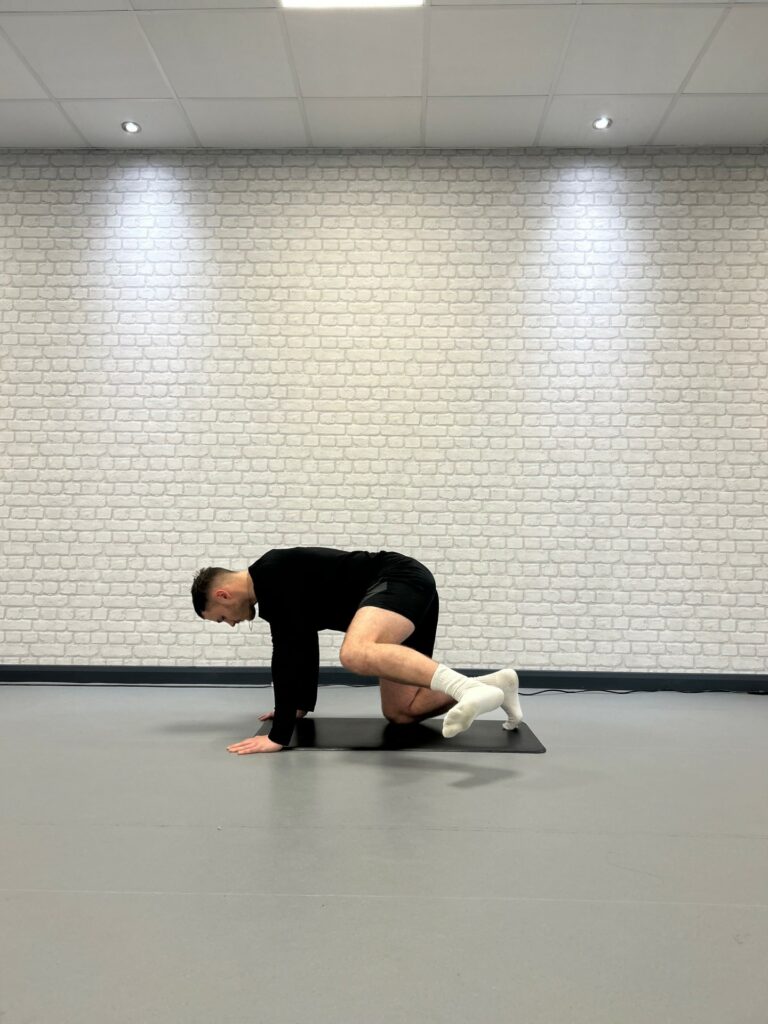
2. Activate And Strengthen The Glutes
Because of prolonged sitting the glutes are struggling to activate and “turn on”. Simple strength exercises will help you with this. By strengthening up the glute we can help protect the lower back as well! Here’s the Banded Crab Walk which will help you to activate and strengthen the glutes:


We offer postural assessments which look at the above and more. These are free for tfd members or £15 for non-members and will help get to the bottom of the issue and work on solving it!

